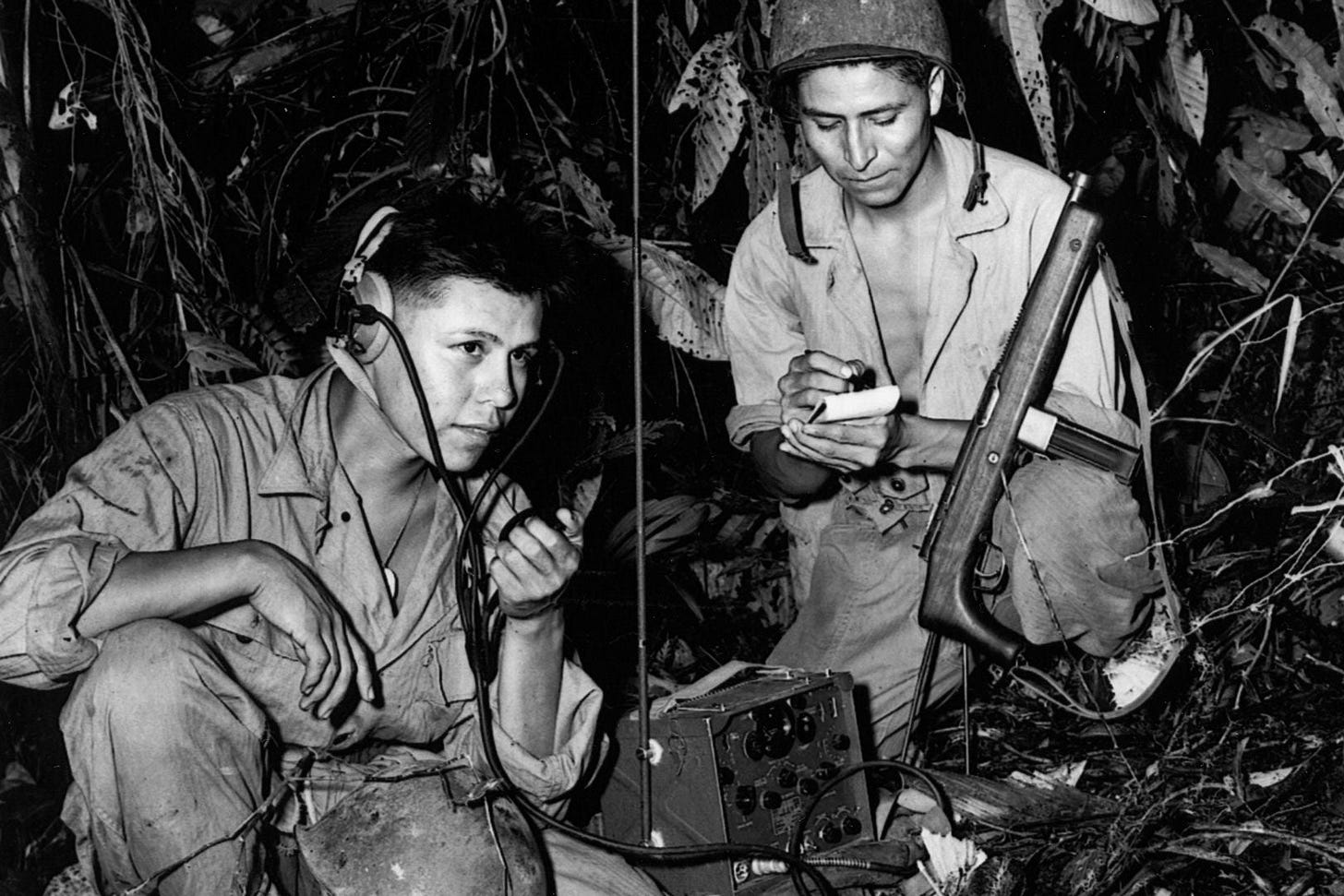Navajo Code Talkers
During World War II, US Marines from the Navajo Nation transmitted top secret messages using a code based on their language. The code was never broken.
The idea of using Navajo for military communication was proposed by Philip Johnston, a non-Navajo World War I veteran who had grown up on a Navajo reservation as the son of missionaries, and who recognised the complexity and uniqueness of the language. Navajo was an unwritten language with no alphabet or written script, making it difficult for outsiders…



